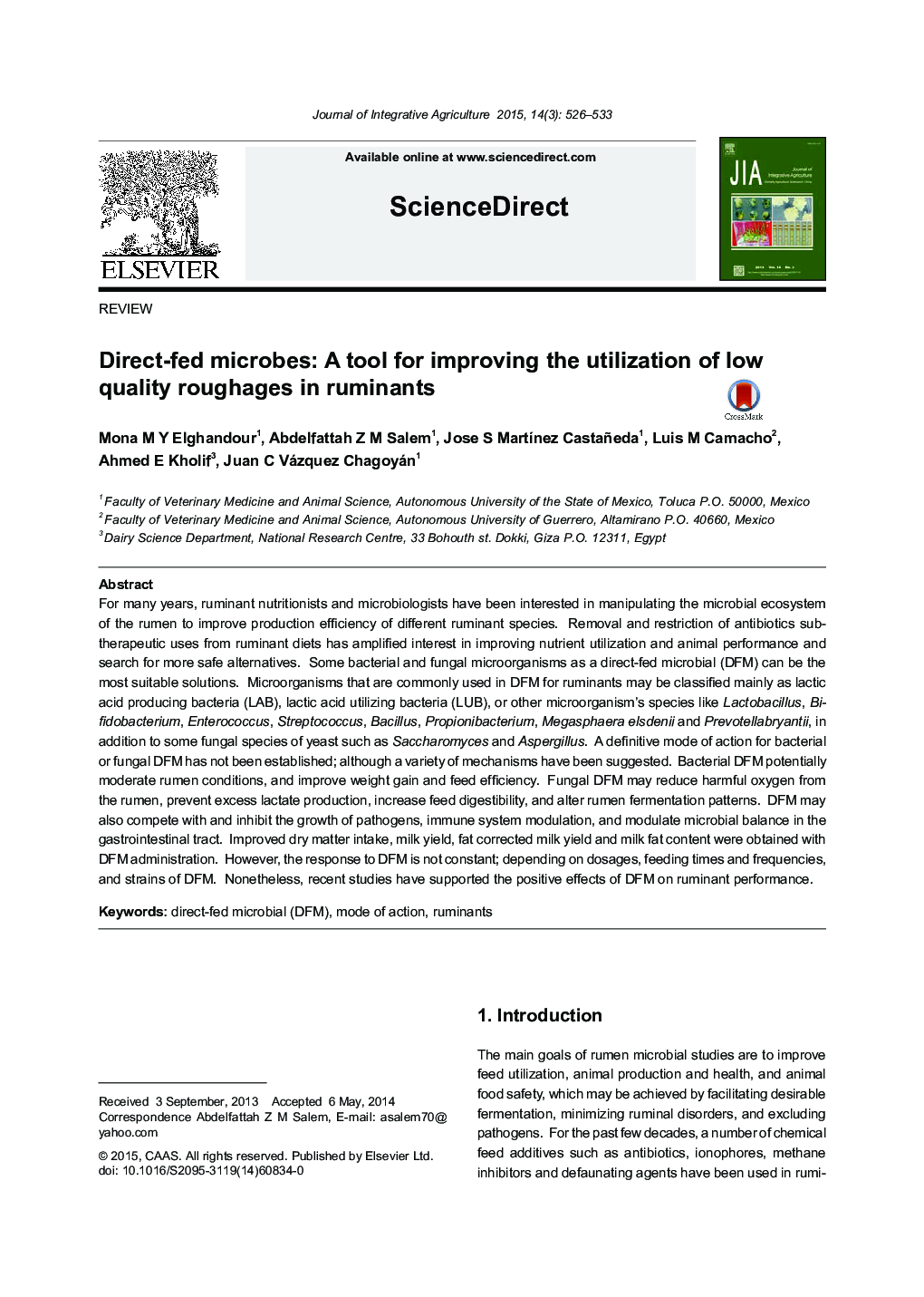| Article ID | Journal | Published Year | Pages | File Type |
|---|---|---|---|---|
| 4494240 | Journal of Integrative Agriculture | 2015 | 8 Pages |
For many years, ruminant nutritionists and microbiologists have been interested in manipulating the microbial ecosystem of the rumen to improve production efficiency of different ruminant species. Removal and restriction of antibiotics sub-therapeutic uses from ruminant diets has amplified interest in improving nutrient utilization and animal performance and search for more safe alternatives. Some bacterial and fungal microorganisms as a direct-fed microbial (DFM) can be the most suitable solutions. Microorganisms that are commonly used in DFM for ruminants may be classified mainly as lactic acid producing bacteria (LAB), lactic acid utilizing bacteria (LUB), or other microorganism's species like Lactobacillus, Bifidobacterium, Enterococcus, Streptococcus, Bacillus, Propionibacterium, Megasphaera elsdenii and Prevotellabryantii, in addition to some fungal species of yeast such as Saccharomyces and Aspergillus. A definitive mode of action for bacterial or fungal DFM has not been established; although a variety of mechanisms have been suggested. Bacterial DFM potentially moderate rumen conditions, and improve weight gain and feed efficiency. Fungal DFM may reduce harmful oxygen from the rumen, prevent excess lactate production, increase feed digestibility, and alter rumen fermentation patterns. DFM may also compete with and inhibit the growth of pathogens, immune system modulation, and modulate microbial balance in the gastrointestinal tract. Improved dry matter intake, milk yield, fat corrected milk yield and milk fat content were obtained with DFM administration. However, the response to DFM is not constant; depending on dosages, feeding times and frequencies, and strains of DFM. Nonetheless, recent studies have supported the positive effects of DFM on ruminant performance.
